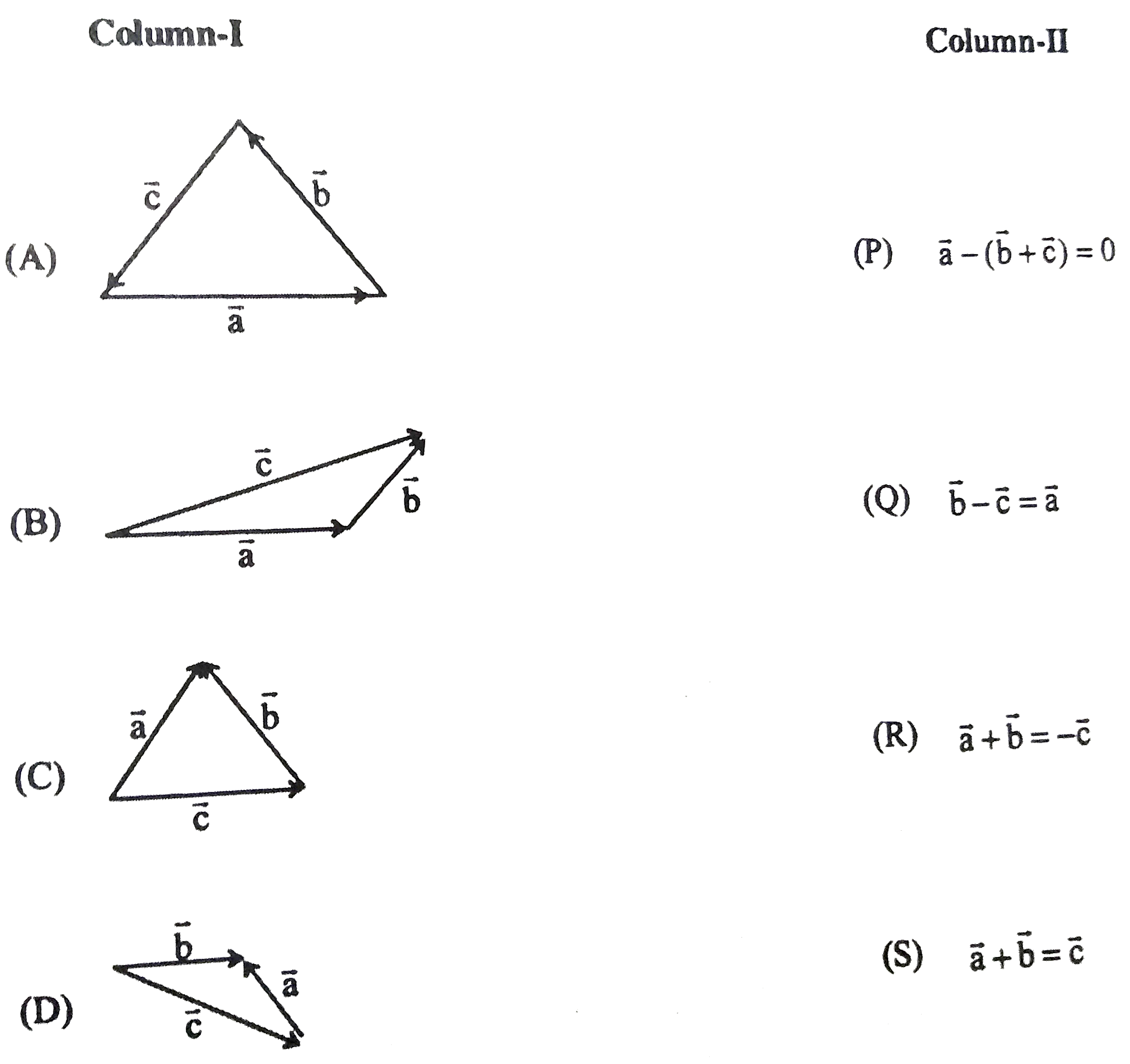For any particle moving with some velocity (→v) & acceleration (→a), tangential acceleration & normal acceleration are defined as follows.
Tangential acceleration - The component of acceleration in the direction of velocity.
Normal acceleration - The component of acceleration in the direction perpendicular to velocity.
If at a given instant, velocity & acceleration of a particle are given by .
→c=4ˆi+3ˆj
vaca=10ˆi+15ˆj+20ˆk
Find the tangential acceleration of the particle at the given instant :-Solution in Gujrati
17(4ˆi+3ˆj)
175(4ˆi+3ˆj)
17(4ˆi−3ˆj)
175(4ˆi−3ˆj)
The correct Answer is:B
Step by step video & image solution for For any particle moving with some velocity (vecv) & acceleration (veca), tangential acceleration & normal acceleration are defined as follows. Tangential acceleration - The component of acceleration in the direction of velocity. Normal acceleration - The component of acceleration in the direction perpendicular to velocity. If at a given instant, velocity & acceleration of a particle are given by . vecc=4hati +3hatj vaca=10hati+15hatj+20hatk Find the tangential acceleration of the particle at the given instant :- by Physics experts to help you in doubts & scoring excellent marks in Class 12 exams.
Updated on:21/07/2023Topper's Solved these Questions
- UNIT & DIMENSIONS, BASIC MATHS AND VECTOR BOOK - ALLEN CHAPTER - UNIT & DIMENSIONS, BASIC MATHS AND VECTOR EXERCISE - Exercise (O-1) Matrix match type Questions.
3 Videos
- UNIT & DIMENSIONS, BASIC MATHS AND VECTOR BOOK - ALLEN CHAPTER - UNIT & DIMENSIONS, BASIC MATHS AND VECTOR EXERCISE - Exercise (O-2) Single Correct Type Questions.
17 Videos
- UNIT & DIMENSIONS, BASIC MATHS AND VECTOR BOOK - ALLEN CHAPTER - UNIT & DIMENSIONS, BASIC MATHS AND VECTOR EXERCISE - Exercise (O-1) ComprehensionType Questions.
3 Videos
- TEST PAPERSBOOK - ALLEN CHAPTER - TEST PAPERSEXERCISE - MATHS
1 Videos
- WAVE OPTICSBOOK - ALLEN CHAPTER - WAVE OPTICSEXERCISE - Exercise 2 (Previous Year Questions)
7 Videos
Similar Questions
Column-I show vector diagram relating three vectors →a,→b and →c. Match the vector equation in column -II, with vector diagram in column-I:

View SolutionIn a certain system of units, 1 unit of time is 5 sec, 1 unit of mass is 20 kg and 1 uint of length is 10m. In this system, one unit of power will correspond to :-
View SolutionIn a certain system of absoulte units the acceleration produced by gravity in a body falling freely is denoted by 5, the kinetic energy of a 500 kg shot moving with velocity 400 metres per second is denoted by 2000 & its momentum by 100
The unit of length is :-
View SolutionIf complex number z(z≠2) satisfies the equation z2=4z+|z|2+16|z|3, then what is the value of |z|4 ?
View SolutionElectromagnetic waves are transverse is nature is evident by
View SolutionGive examples where a. the velocity of a particle is zero buts its acceleration is not zero. b.the velocity is opposite in direction to the acceleration, c. the velocity is perpendicular to the acceleration.
View SolutionFigur shows the total acceleration and velocity of a particle moving clockwise in a circle of radius 2.5m at a given instant of time. At this instant, find: (a) the radius acceleration, (b) the speed of the acceleration, (c) its tangential acceleration.
View SolutionA particle is moving in a circle of radius R and its speed is given by v=lambdat^(2) , where lambda is a constant. Find (a) radial acceleration, (b) tangential acceleration, ( c) resultant acceleration and (d) angle between acceleration and velocity.
View SolutionA particle moves in such a way that its position vector at any time t is →r=tˆi+12t2ˆj+tˆk.
Find as a function of time:
(i) The velocity (d→rdt) (ii) The speed (∣∣∣d→rdt∣∣∣) (iii) The acceleration (d→vdt)
(iv) The magnitude of the acceleration
(v) The magnitude of the component of acceleration along velocity (called tangential acceleration)
(v) The magnitude of the component of acceleration perpendicular to velocity (called normal acceleration).
View SolutionA particle is moving on a circular path of radius 1.5m at a constant angular acceleration of 2rad/s2. At the instant t=0, angular speed is 60/π rpm. What are its angular speed, angular displacement, linear velocity, tangential acceleration and normal acceleration and normal acceleration at the instant t=2s.
View SolutionFigure shows the total acceleration and velocity of a particle moving clockwise in a circle of radius 2.5 m at a given instant of time. At this instant, Find: (i) the radial acceleration, (ii) the speed of the particle and (iii) its tangential acceleration.
View Solutionप्रत्येक का एक उराहरण दीजिए।
(i) कण का वेग उसके त्वरण् के विपरीत दिशा में हो।
(ii) कण का वेग शून्य हो परंतु त्वरण शून्य न हो।
View Solutionऐसे उदाहरण दे जिसमे (a) एक कण का वेग तो शून्य है , पर त्वरण शून्य नहीं , (b ) वेग की दिशा त्वरण की दिशा के विपरीत है ओर (c ) वेग की दिशा त्वरण की दिशा के लंबवत है ।
View SolutionGive examples for the particle where (a) the velocity is in opposite direction to the acceleration (b)the velocity of the particle is zero but is acceleration is not zero.
View SolutionA particle is moving along a circular path. The angular velocity, linear velocity, angular acceleration and centripetal acceleration of the particle at any instant are vec(omega), vecv, veca, veca_(c) respectively. Which of the following relation is not correct ?
View SolutionIn a part of full oscillation of a particle doing simple periodic motion (a) Acceleration is in the direction of velocity. (b) Acceleration is in the opposite direction of velocity.
View Solution
